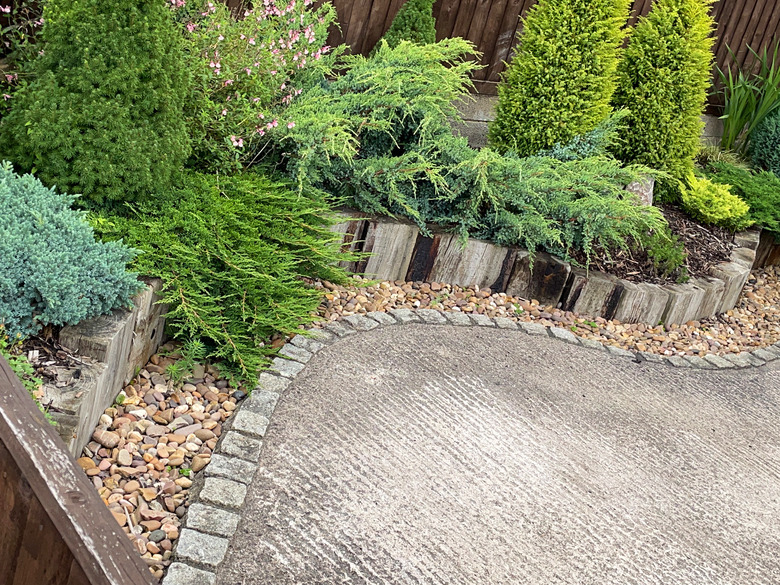The Easiest Way To Separate Gravel From Dirt
Gravel is a classic and attractive material used to define pathways, driveways, parking areas, and even garden landscaping. Unfortunately, over time those well-defined drives and paths become a muddy mess due to sediment washing into the bed of gravel. Once it is clogged with sediment, the gravel becomes a perfect home for weeds and eventually sinks beneath the soil. You can restore your gravel bed by separating the rocks from dirt, which also happens to provide an excellent compost for the garden. Alternatively, you can sift out the gravel to use in another location, leaving behind a rock-free, rich soil perfect for a lawn or garden.
To prepare for this project, buy a rock sieve (also called a soil sifter) or build your own. Soil sifters are easy to create. Simply nail together four pieces of 1x4 lumber in the size that you want, fold a square piece of hardware cloth over the edges of the frame, and staple with a staple gun. Make sure the sifter has holes that aren't so large that the gravel will fall through, but also aren't too small for sifting soil and debris. A good size is 1/4 inch. Then wait for a day when the gravel is mostly dried out so that the soil won't clump and be heavy. Put on your gloves — gravel is very rough on the hands — get your materials together and start shoveling.
Things Needed
How to Sift Dirt From Gravel
1. Set Up Your Supplies
Lay the tarp next to the gravel bed. Place the wheelbarrow or 5-gallon bucket on top of the tarp. Place your soil sifter on top of the bucket or set it at an angle in the wheelbarrow.
2. Begin to Shovel and Sift the Gravel
Shovel gravel onto the sifting screen, two or three shovelfuls at a time. Gently shake the screen from side to side to loosen the soil, making it fall through the sieve and into the bucket or wheelbarrow. Pick out any debris that wasn't sifted out and toss the clean gravel onto the tarp.
3. Haul Away the Soil
Continue sifting soil until the bucket or wheelbarrow is partially filled but not too heavy to move. Haul the soil off to compost garden beds, fill in low areas, or create a new lawn area or garden bed. Continue to sift and haul away the soil until you are left with a large pile of gravel on the tarp.
4. Replace the Gravel
Examine the area you will be restoring, evening out any high spots if needed to achieve a consistent depth. Replace any base materials that are damaged or missing, or install a new base for your gravel path. Landscapers typically recommend having a 2-inch base of crushed stone covered with landscaping fabric. Shovel gravel on top of your base until it is at least 2 inches deep. Continue following steps 1 through 4 until you have cleaned and restored your gravel bed.
